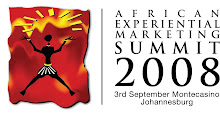In today’s marketing environment, the term ‘influencing the influencers’ normally refers to the online space – blogs, social networking etc. But word of mouth has always been around; it’s now simply adding another dimension, in this case digital media, to its appeal. But as Carol Abade, CEO of Exp. explains, it’s not just about telling someone is great. “Influencing goes beyond word of mouth into conviction. It is not about simply passing on information but about passing on the experience linked to real belief of the brand promise.”Word of mouth, especially using new digital mediums, has also levelled the playing fields for brands, especially those that don’t possess enormous marketing budgets. “Frankly word of mouth is not new to marketing it is only now being defined as a key for brands that have niche appeal and cannot always employ mass media to get their messages out there,” says Abade. The key to influencing the influencers however, is finding them, and this can be as easy as looking at your existing customers. “They are mostly long term loyal consumers, whose reason for use of the brand is tied to the long term relationship that they have had with the brand,” says Abade.“There are several models applied to be able to determine key brand influencer. Most of these fairly scientific and rely on profiling and cross matrix applications of consumer lifestyle, the brand promise, and the relationship that they have with the brand against the rest of the category. The willingness of the consumer to work for you will be based on your objectives, in several instances it’s a subtle association, derived from their ‘influencing’ position that one utilises to draw associations.”Now while it is known that word of mouth marketing can be extremely powerful, it doesn’t always work for every brand; in fact, in some cases in can even be damaging. So how do you know when to use it? “It is becoming more and more appealing in instances where traditional marketing is not consumed in the way that is expected,” says Abade. A key target market is of course, today’s youth market, which is always connected, and always looking for the next ‘in-thing’. “The youth market is currently consuming a different media which changes as quickly as it starts keeping up with that requires a cross section of influencing positions being able provide lead into new innovations. In this case the use of the influencer is key in being able to drive audiences to new ideas in digital space, based on their experience.On the more traditional side, a form of this is used for brands that have self or legislated regulations that preclude them from using traditional mass media. But throughout the centuries this has been applied successfully in brands with real niche targets as opposed to wide mass appeal like luxury brands,” says Abade. Still, word of mouth marketing has to also be carefully examined to ensure that the right campaign is used for the right target audience within each market. As Abade points out, in African markets, which are extremely complex, it is not possible to come up with a single guide that is assumed to work across the different markets. “The key is to identify what is ‘real influence’ against what is ‘presumed influence’; this is the crux of operating in these markets. And that question will be handled in detail at the African Experiential Marketing Summit…”
Carol will be presented a keynote speech on Influencing the Influencers at the African Experiential Marketing Summit on 3 September 2008, in Johannesburg.
Contributed by Marketing Mix
Subscribe to:
Post Comments (Atom)
.jpg)
.jpg)

No comments:
Post a Comment